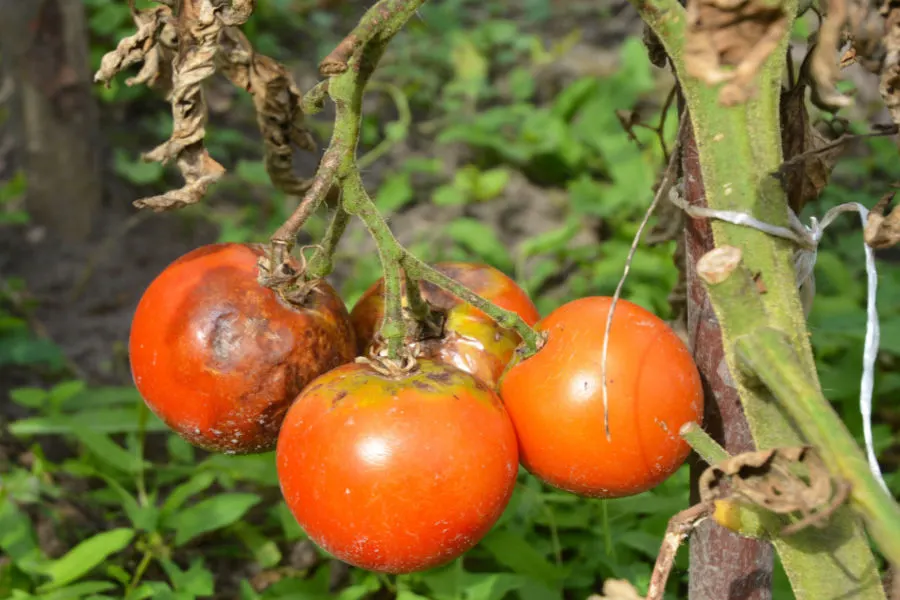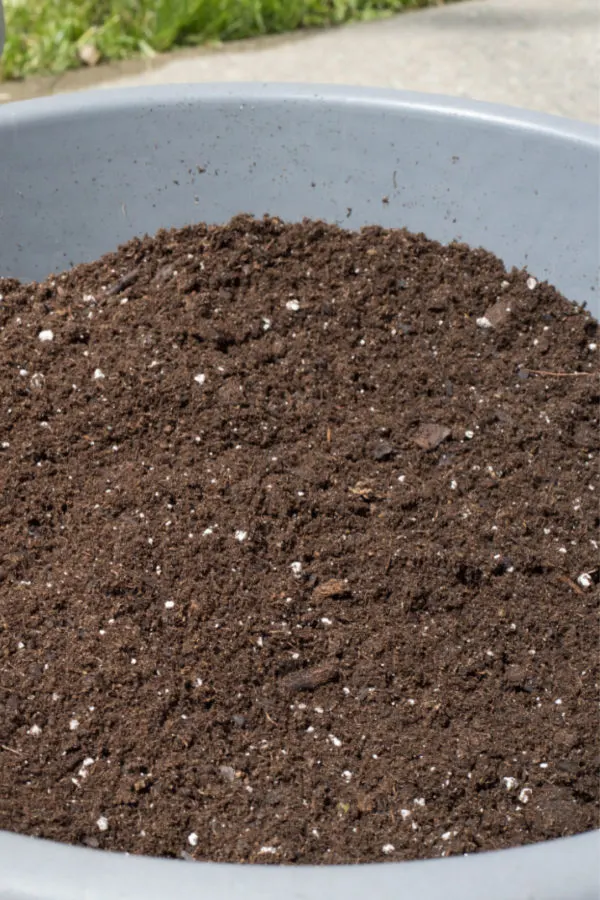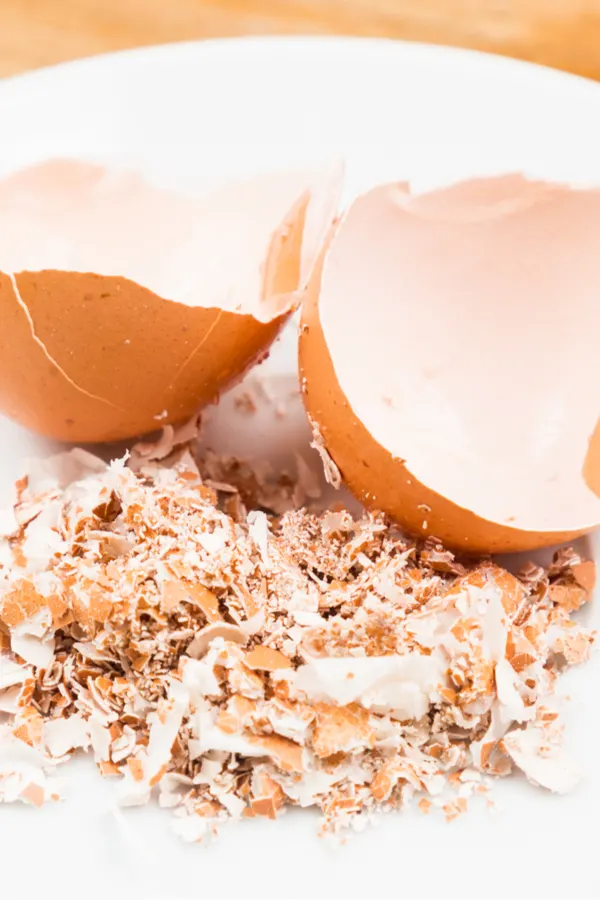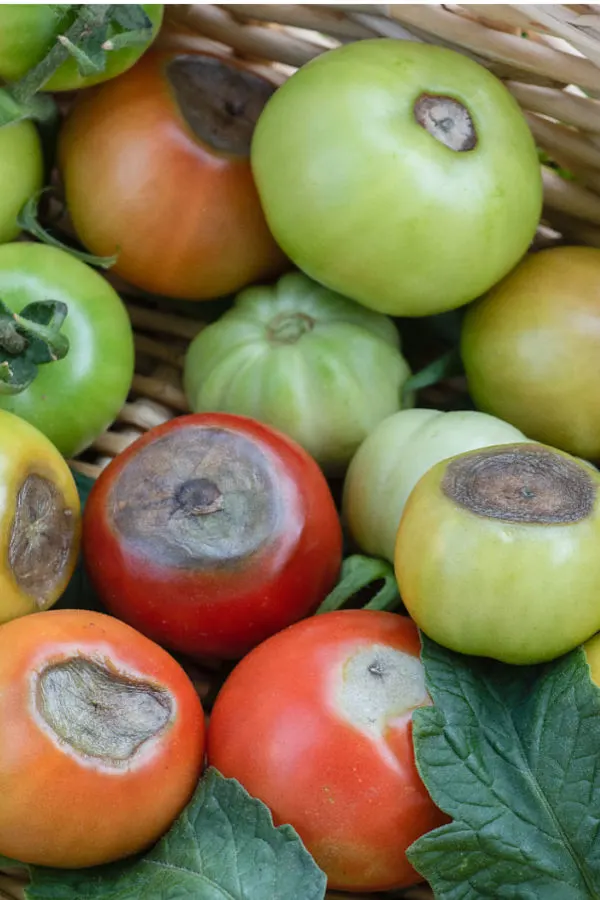When it comes to keeping your tomato plants healthy and productive, one of the biggest challenges gardeners face is finding effective ways to stop tomato blossom end rot and tomato blight from ruining their crop.
One of the most painful experiences for a gardener to watch is to see a healthy vegetable plant suddenly struggle to survive – or to produce fruit that is not fit to eat. Unfortunately, when it comes to blight and blossom end rot, that is exactly what can occur.
It is important to first note that blight and blossom end rot are two completely different issues for tomato plants. With that said, when it comes to preventing them, many of the same practices can help keep your tomato plants safe from both.

The good news is that as bad as both of these health issues can be, there are actually a few simple ways to protect your tomato crop quite easily. The key to success really comes down to knowing what the root cause is of each issue, and then putting in place the measures that can keep your tomato plants safe all year long.
The Difference Between Tomato Blight & Blossom End Rot
Although both blight and blossom rot can ruin a tomato harvest, they do so in different ways. Tomato blight is a fungal/soil borne disease that kills plants by destroying the foliage. It starts out with black spots appearing on leaves. From there, it spreads to the entire plant and eventually the fruit as well. As it does, the plant slowly dies off in the process.
Blight spreads through spores that find a permanent home in the ground. Unfortunately, the spores can overwinter and survive for years in the soil. In fact, they can live for as long as three to five years in the soil, ruining any tomatoes planted in that space year after year.
Blossom end rot on the other hand is not a disease, but a condition that occurs when the tomato plant can not take up enough calcium from the soil where it grows. It may not entirely wipe a plant out, but it can destroy the yields for sure.
Most often it occurs because the soil simply is deficient in the mineral. But sometimes, it can occur because the plant’s roots are either water-logged or too dry, and unable to absorb the calcium they need to produce good fruit.
Blossom rot affects the fruit of tomatoes. A small, black or dark spot will appear on the end of tomatoes. From there, the spot continues to grow and most often rots the fruit before it can mature.
How To Stop Tomato Blossom Rot & Tomato Blight
The good news is there are some simple ways to protect your plants from both issues. In fact, there is one basic practice, crop rotation, that can play a huge role in almost entirely eliminating both issues all on its own.
Tomatoes are one of the most susceptible vegetable plants when it comes to soil-borne disease. In addition, they are also heavy feeders of the nutrients within the soil. One of those nutrients happens to be calcium, which, as noted is the root cause of blossom end rot.
When you continue to plant tomatoes in the same location, bad things happen. The soil begins to lose valuable nutrients such as calcium. At the same time, with tomato plants growing year after year in the same exact space, the likelihood of blight spores infecting the soil increases dramatically.

But by rotating plants your tomato plants to a new area of the garden, or giving them brand new soil in containers, you instantly minimize the potential for both issues to occur.
For best results, rotate your tomatoes to a new spot every year for at least three years, four is even better. For tomatoes growing in containers or 5 gallon buckets, you should always change the soil out every year. This gives your plants the best chance of avoiding either issue.
Additional Protection – How To Stop Tomato Blossom Rot
Beyond crop rotation, there are a few other measures you can take to stop blossom rot and blight. Of the two issues, blossom end rot is a bit easier to manage. As mentioned above, the root cause is not disease, but a deficiency of calcium in the soil.
Because of that, by simply adding calcium into the soil along with other trace nutrients the tomato plant needs to develop strong roots and stems, you can keep blossom rot out of the picture. And the best way to add that power to your soil is with compost and egg shells.

When planting, always mix in a shovel or two of compost in the planting hole of each plant. Compost is by nature loaded with a host of nutrients, including calcium. A quarter cup of worm castings can help as well. But to add a real dose of calcium, egg shells are the answer!
Egg shells contain high levels of calcium. When they are finely crushed or ground up and added into a planting hole, they slowly release that calcium to the tomato plant. The finer the egg shells are ground, the quicker they will absorb into the plant.
You can use an old coffee grinder to pulverize the shells, or simply crush them up as finely as possible with your hands. Either way, they will go a long way to keeping blossom rot from ever occurring again. See: Why To Plant Egg Shells With Tomato Plants
Additional Protection – How To Stop Tomato Blight
Eliminating blight is a bit more tricky. For total success, it involves a few more steps to keep tomato plants safe and healthy. Beyond rotation, which again is THE biggest key, there are a few additional methods that can help to keep your plants safe. The first is pruning your tomato plants as they grow.
As your tomato plants mature, keep the bottom of each plant trimmed up. Try to trim bottom branches so there is at least six inches from the soil surface to the bottom of your leaves. For starters, this allows light and circulation into the plant, which is extremely beneficial for tomato production.
For more great tomato growing info, listen to our podcast below on how to fertilize tomatoes!
But more importantly, pruning up the bottom branches makes it harder for spores to splash up to infect leaves. In addition to bottom pruning, always prune back any foliage that shows signs of blight or disease right away. Be sure to keep any of these infected or diseased branches out of the compost pile. Unfortunately, it can spread there too.
Last but not least, always mulch underneath your tomato plants! Every time it rains or you water, spores can splash up and find a home on the tomato leaves. By mulching, you reduce and often even eliminate that from occurring. A four to six inch layer of straw, shredded leaves or grass clippings around your plants is a must.
As a final tip, be sure to clear out your tomato plants (and all vegetable plants) at the end of each growing season. Allowing old plants to over-winter is inviting disease and insect problems to take hold in the garden soil.
Here is to stopping tomato blight and blossom rot before it ever starts in your garden! Happy Gardening – Jim and Mary.

